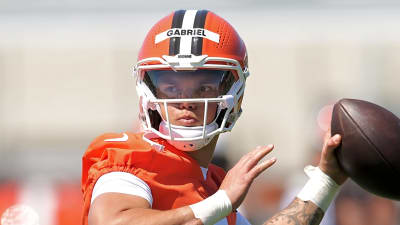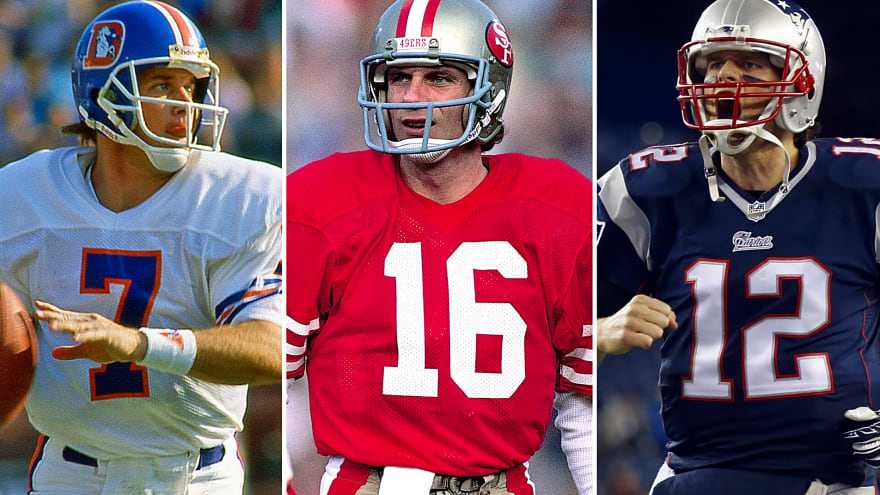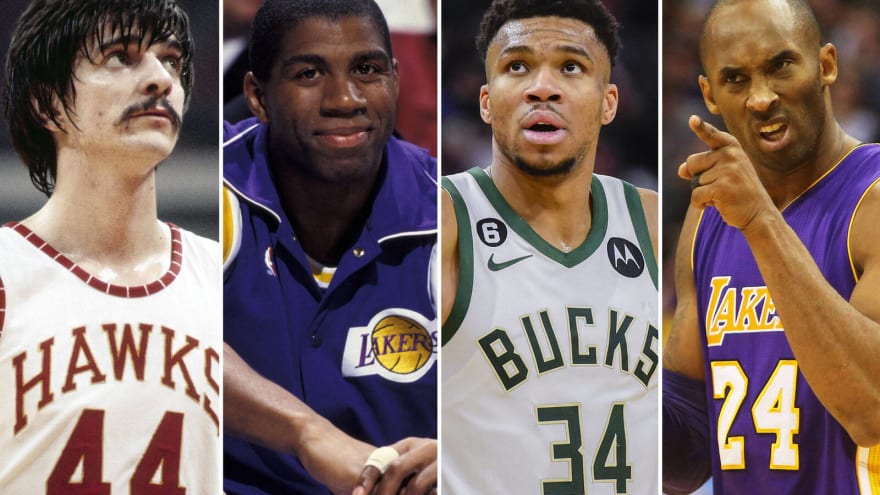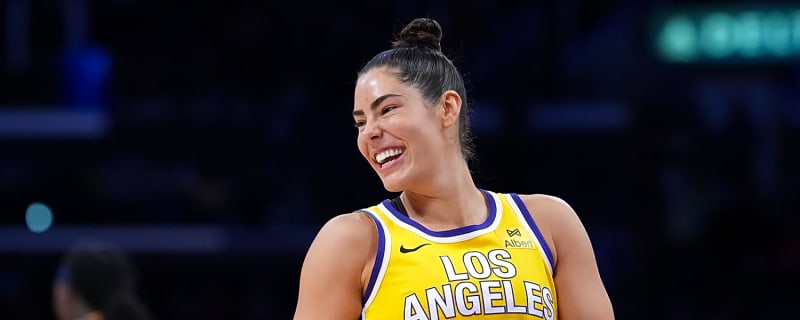
Making of the Peach Bowl: A look inside this year's CFB Playoff semifinal prep
Every single bowl game, whether it’s a shoehorned corporate outfit with a clunky name or a blue-blood, "traditional" one, tries to market itself around pageantry, philanthropy, pride or some combination of the three. Yet, very few of them have been able to meld the three together in such a way that they have claimed prime real estate in the hearts and minds of college football fans around the nation.
In that elite class live hard-working men and women who put in nearly a year of preparation for their events. The Chick-fil-A Peach Bowl, college football’s ninth-oldest bowl game, is not only a game with rich history, but one that happens to be the biggest annual show in Atlanta that isn’t a Super Bowl. In less than two weeks, the 2016 edition enters rarefied territory as it takes its turn in the national semifinal rotation as part of the College Football Playoff.
To fully understand what it takes to put together the Peach Bowl, you have to go back to 1985, when the game nearly went out of business after less than 20 years. When the Metro Atlanta Chamber of Commerce took control of the game, the city’s business community stepped up in support. Delta Airlines wrote the first check for $100,000 and purchased over 3,000 tickets to help kick-start the turnaround. In speaking to the game’s significance to the city, Peach Bowl CEO Gary Stokan, who has held the post since 1998, told Yardbarker that the growth in sponsorships “elevated our game to the business community. So now, we have the likes of Coca-Cola, Home Depot, Chick-fil-A, all Fortune 500, Atlanta-based companies who are sponsoring our game.” It also helped that Atlanta is the third-largest convention city in the U.S. behind Las Vegas and Chicago.
About a decade later in 1996, Chick-fil-A became the title sponsor, and the game had a 17-year sellout streak — second to the Rose Bowl in Pasadena – thanks to huge fan support. In 2014, “Peach” returned to the bowl’s name — the game was called the Chick-fil-A Bowl until 2013 — along with something else: a place among the elite as one of the rotating hosts of the College Football Playoff along with the Fiesta, Cotton, Sugar, Rose and Orange Bowls.
So in 2016, the Peach Bowl experience is more than just a single game, albeit a competitive one of some of the top teams in the country. It’s a year-round effort to not only prepare for the game itself, but to raise scholarship money and find other ways to celebrate the spirit of competition.
Case in point, there’s a great coaches event every spring called the Chick-fil-A Peach Bowl Challenge, which pits NCAA coaches with famed former athletes of the same school to win a share of over a half-million dollars of scholarship and charitable donations in a golf tournament. It’s a rare opportunity for Peach Bowl organizers to connect with athletic directors and coaches whose teams could potentially play in either the Peach Bowl itself or the Chick-fil-A Kickoff Game, which the committee puts together for Labor Day weekend. It’s also a chance to bring along coaches who may have never played in the bowl game, such as retired coaches Steve Spurrier and Frank Beamer, or even Urban Meyer, who will lead the third-ranked Ohio State Buckeyes into the Fiesta Bowl, this year’s second semifinal game, against Clemson.
This spring, Ole Miss head coach Hugh Freeze and former tight end Wesley Walls won the top prize of $100,000, combining for 11-under par.
“The unique thing about it is that you get these coaches together who are so busy and their time is so valuable, and you create a unique atmosphere for them for a few days,” reflected David Epps, COO and vice president of marketing for the Peach Bowl, who has been part of the game for over 20 years. “They get to spend time with their peers, they can relax and they can compete, which is what they love to do.”
The latter part is true as Georgia Tech’s Paul Johnson and hoops alumnus Jon Barry have won four tournaments while coming in second this year.
“Those guys are excellent golfers,” said Epps. “There’s no doubt that every year, the targets are on their backs, and it was quite a tournament this year.”
Immediately after the tournament, the coaches head right back to work as well as the bowl organizers themselves. Since the first day of the season, the small team of about 14 staffers and their partners tracked the social media and digital footprints of the road teams in order to get a sense of who may come to Atlanta in December and what matters in terms of the fan experience. When top-ranked Alabama and fourth-ranked Washington were selected, the Peach Bowl team was off and running in communicating to season ticket holders and other interested fans on exactly what will happen in Atlanta when they arrive. From customized greetings at the airport to signage along the highways, the Crimson Tide and Huskies will be given warm welcomes into the city.
The experience extends to the official team hotels where fans also stay. On the day before the game, there’s approximately a four-hour block in which 80 percent of the fans check in to their hotels, a normally mundane experience turned exhausting when coming to town for a big event. To spruce things up, the lobbies of both hotels are turned into mini fan festivals with music, food, face painting, merchandise, and even the cheerleaders and marching bands of the teams, all free add-ons for the arriving fans.
In addition to special deals to draw these fans to their establishments, restaurants throughout downtown Atlanta take part in "Gridiron Grub," creating dishes loosely inspired by the culture of college football.
Fans will also enjoy the Game Day Parade, which runs through Centennial Olympic Park in downtown Atlanta, the individual teams and marching bands walk toward the Georgia World Congress Center and the biggest fan event, the Game Day Fan Fest. About 35,000 people will take part in the festivities, which will include team rallies of sorts as both Alabama and Washington join in to greet the fans one last time before the game itself.

Getting support for the Peach Bowl means getting the entire community involved, down to Yang Yang's help at Zoo Atlanta for the Chick-fil-A Peach Bowl Panda Pick ‘Em.
“Ultimately, whether a team wins or loses, you want that fan to be able to say, ‘The experience was worth it; I got my money’s worth,” Epps said. “We know these fans are making a decision to spend thousands of dollars when they could have renovated their basement or purchased an 80-inch flat panel TV.”
And because of those decisions to make the journey to Atlanta, the fan experience is also a huge reason why the Peach Bowl will give $1.7 million in charitable and scholarship donations this year. In reference to the sellout streak, Stokan said, “The fans bought the tickets, so the fans supported the game, and that’s why we’ve given $21 million back to the community since 2002 because the community made this bowl.”
For the game itself, adding to the fact that this is a national semifinal, there are a few different ripples for the committee that it has to take into account compared to past editions. Working in concert with the College Football Playoff committee in Dallas, the Peach Bowl team had to consider major shifts, such as front-loading its social activities earlier in the prior week so both teams could use the immediate days before the game strictly for practice time. It also had to adjust seemingly smaller, but incredibly important, concerns like painting the field, setting up the post-game press conference and merging the Peach Bowl trophy presentation with the dynamics of the Playoff itself.
Because both the Peach Bowl and Fiesta Bowl in Glendale, Ariz., would have the semifinals in the third year of the rotation between the other New Year’s Six games, Epps said that they had a head
start in planning for those adjustments.
“Bowls are always an award for players because they’ve busted their tails since the spring. The semifinals are a little different. It’s a reward for the players, but it’s almost like a business trip.
“You have to put together an experience that allows coaches and players to maintain their focus on their real purpose, which is to win a football game, while at the same time, we feel that it’s very important that those players, no matter what happens on the field, go home with memories that they’ll never forget.”
To that point, the players are sure to have lasting connections to Atlanta because of this game. They get to take in some history, learning about the Civil Rights movement through visiting the Dr. Martin Luther King Jr. Memorial Site. It leads to the most profound moment of Bowl Week as both teams sit together at the Ebenezer Baptist Church, where both King Jr. and his father preached.
Of the lighter variety, there is the Battle for Bowl Week. Players of both teams will go head-to-head in five separate events, including go-cart racing, bowling and basketball, all for bragging rights. The last day features a milkshake-making competition where players are timed on how quickly they can make Chick-fil-A milkshakes.
It all culminates in the Football Feud, a "Family Feud"-style game show that determines who actually keeps the WWE-style championship belt that is passed around between the individual competitions. When asked how it came about, Epps said, “These are 18-, 19-year-old kids. Do they really want to sit through another banquet? Let’s do something that’s fun for the players.”
Similar to the syndicated game show, the players themselves are surveyed on things about their coaches or their programs. The 2013 participants, Texas A&M and Duke, got quite the kick out of the Feud.
Of course, you usually hear about the "swag bags" that the players get from these bowl games, and it’s safe to say they’re not getting actual bowls of peaches (pun absolutely intended). For Alabama and Washington, this year the players will each receive a personalized commemorative football, a branded commemorative watch and gift cards that should come in quite handy this time of year, whether they shop for themselves or loved ones.
After the final whistle, the lasting image will be which coach hoists the Peach Bowl trophy and moves on to the National Championship Game in Tampa on Jan. 8. From all of the events that precede the game, there’s actually a correlation to what happens on the field. Every year since the Battle for Bowl Week took place, the team that has won the belt, won the game.
Hopefully Stokan, Epps and their team are prepared for a much more spirited edition of the Football Feud this time around.
0/10
2:00
More must-reads:
- TailGreater: Your Peach Bowl travel guide
- TailGreater: Your Rose Bowl travel guide
- The 'Longest-running bowl games' quiz
Breaking News
Trending News
Customize Your Newsletter
 +
+
Get the latest news and rumors, customized to your favorite sports and teams. Emailed daily. Always free!
TODAY'S BEST

Texas' Arch Manning has concern on OL after season-ending injury
Texas, the No. 1 team in the preseason coaches poll, has a big concern for its offensive line with a few weeks to go before it opens the season at Ohio State on Aug. 30. Per On Texas Football, right tackle Andre Cojoe suffered a season-ending injury. Per On3, the injury is believed to be a torn ACL. The third-year offensive tackle has played in four career games and was competing with Brandon Baker for the starting job on the right side. "Texas O-lineman Andre Cojoe suffered what’s feared to be a torn ACL, Inside Texas has learned," wrote Eric Nahlin of On3. "Cojoe was in competition with Brandon Baker for Texas’ right tackle role during preseason camp. Baker is set to win the starting job with Cojoe out for the season. The second-year offensive lineman played in eight games for the Longhorns in 2024, including against Ohio State in the College Football Playoff semifinal. The loss of Cojoe is a big blow to the Longhorns' depth on the offensive line that is tasked with protecting quarterback Arch Manning. On3 projects true freshman Nick Brooks to become the swing tackle behind Baker and starting left tackle Trevor Goosby, a tall order for an 18-year-old in the SEC. Texas comes into the season with high expectations in Manning's first season as a full-time starter. How comfortable Manning is behind his offensive line will play a key role in how efficient the offense is. Texas ranked 118th in sacks given up in 2024 with 37. Those hits took a toll on Quinn Ewers, who played through injuries while leading the Longhorns to the CFP.
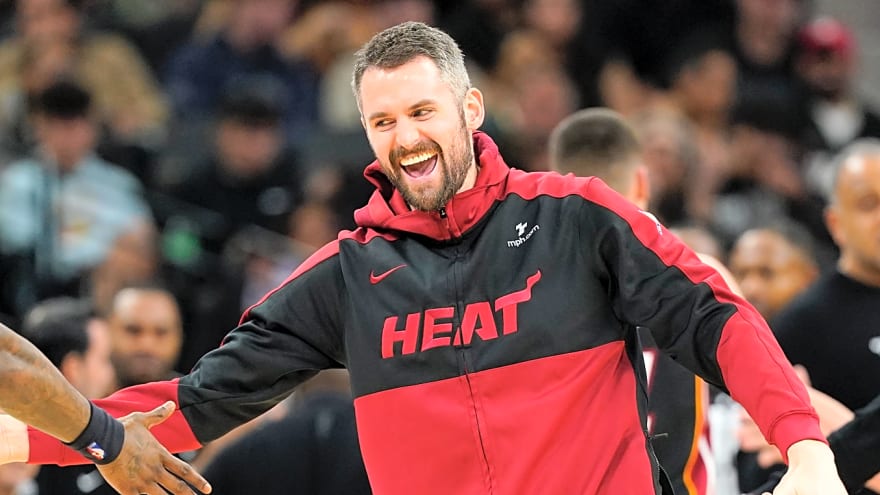
Kevin Love reportedly has preferred buyout destination
Kevin Love is eyeing a return to his roots. The five-time NBA All-Star big man Love has a preferred destination on the buyout market, Brett Siegel of ClutchPoints reported on Tuesday. Love would like to end up in Los Angeles. Now 36 years old, Love spent the last two-and-a-half seasons with the Miami Heat. He averaged just 5.3 points and 4.1 rebounds over 10.9 minutes per game in 2024-25 but still managed to shoot 35.8 percent from three on the year. Earlier this summer however, the Heat traded Love to the Utah Jazz as part of a three-team blockbuster deal. Now Love, a 17-year NBA veteran, is pursuing a contract buyout from the rebuilding Jazz. Though he is a native of Lake Oswego, Oregon, Love played his college ball in Los Angeles at UCLA. He also has ties to both L.A. teams — he won an NBA championship with Los Angeles Lakers star LeBron James on the Cleveland Cavaliers in 2016 and was also coached on that team by Tyronn Lue, who is now head coach of the L.A. Clippers. Both the Lakers and Clippers are currently sitting at 14 guaranteed contracts each. While they still have spots for two-way and Exhibit 10 players, that means the Lakers and Clippers are both down to their final open roster spot. The ex-rebounding leader Love still has some value, though probably more so as a jokester than as a contributing rotation piece. While Love clearly wants a homecoming to Los Angeles, he may have some convincing to do for either the Lakers or the Clippers to give him that final open roster spot.

Brewers righty deserves consideration as dark-horse Cy Young candidate
The Milwaukee Brewers' trade with the Boston Red Sox early in the season flew under the radar. The Brewers acquired former top prospect Quinn Priester from the Red Sox, sending outfield prospect Yophery Rodriguez to Boston on April 7. Pitching prospect John Holobetz was sent to the Red Sox on May 5 to complete the trade. Priester had been expected to be a top-of-the-rotation arm, lauded for his athleticism and plus fastball and curve. However, he struggled during his time in the majors in 2023 and 2024, posting a combined 6.23 ERA and a 1.555 WHiP over 99.2 innings, striking out 69 batters with 41 walks while serving up 19 home runs. Despite a solid outing in his only appearance for the Red Sox, Priester remained in Triple-A as nothing more than pitching depth. That changed with his arrival in Milwaukee. He has exceeded expectations, either as a traditional starter or following an opener. Priester has posted a 3.15 ERA and a 1.190 WHiP over his 114.1 innings for the Brewers, striking out 93 batters with 38 walks. Opponents have mustered a meager .228/.294/.382 batting line in 471 plate appearances with just 13 homers. The Brewers' 64-48 record entering Tuesday is the best in the majors despite a nondescript rotation. While Freddy Peralta is a top-of-the-rotation arm in his own right, staff ace Brandon Woodruff missed all of 2024 and most of the first half of 2025. Pitchers such as Chad Patrick, Tobias Myers and Jose Quintana are back-of-the-rotation arms at this point. The Brewers needed someone to step up with Priester being the unlikely hero. Pitchers Paul Skenes and Zack Wheeler are the prohibitive favorites to win the National League Cy Young Award. BetMGM does not have Priester listed as one of the 10 most likely candidates to take home the hardware. However, Priester's performance, coupled with the Brewers' success this season, is worthy of attention. If he can continue to perform at this level, Priester deserves at least some consideration on the ballot.

Padres already demoting one of their trade-deadline acquisitions
The Padres announced they’ve optioned JP Sears to Triple-A El Paso. They recalled reliever Sean Reynolds and will go with a nine-man bullpen in the short term. Sears will spend at least 15 days in the minors unless he’s brought up to replace a player going on the injured list. San Diego acquired Sears alongside Mason Miller in last week’s massive deadline deal. The 29-year-old southpaw made his team debut Monday night. He allowed five runs in as many innings on 10 hits and a walk against the Diamondbacks. Sears took the loss in a 6-2 defeat. He’d carried a 4.95 earned run average over 22 starts with the A’s. Monday's performance pushed his ERA to 5.12 across 116 innings. It’s a bottom-10 mark among pitchers to log at least 100 frames. Sears had the highest home run rate among that group, offsetting his nearly league average 20.3% strikeout rate and solid 6% walk percentage. This is the first time in two-and-a-half years that Sears heads to the minors. He broke camp with the A’s in 2023 and has been in the majors since then. Sears has also avoided the injured list for that entire time. As a result, he’s tied for fifth in MLB with 87 starts since the beginning of the ’23 season. The durability is the big selling point, as his production (4.62 ERA/4.56 SIERA) over that stretch is that of a fifth or sixth starter. The demotion shouldn’t have any impact on Sears’ service trajectory. He has already surpassed the three-year mark and will qualify for arbitration next winter. He’s under team control for three seasons beyond this one. While he’ll probably be back up at some point this year, it may require an injury elsewhere in the rotation. San Diego optioned Randy Vásquez over the weekend. They have a four-man rotation of Dylan Cease, Nick Pivetta, Yu Darvish and deadline acquisition Nestor Cortes. Darvish and Cortes will get the ball for the next two outings. San Diego is off Thursday and could turn back to Pivetta and Cease on extra rest for their first two games of the weekend series against the Red Sox. That’d point to the series finale on August 10 as Michael King’s return date. King threw 61 pitches in what is expected to be his final rehab start on Sunday, via the MLB.com injury tracker. He’d be on six days rest for his first MLB appearance since he went on the injured list in late May with a nerve problem in his throwing shoulder.

